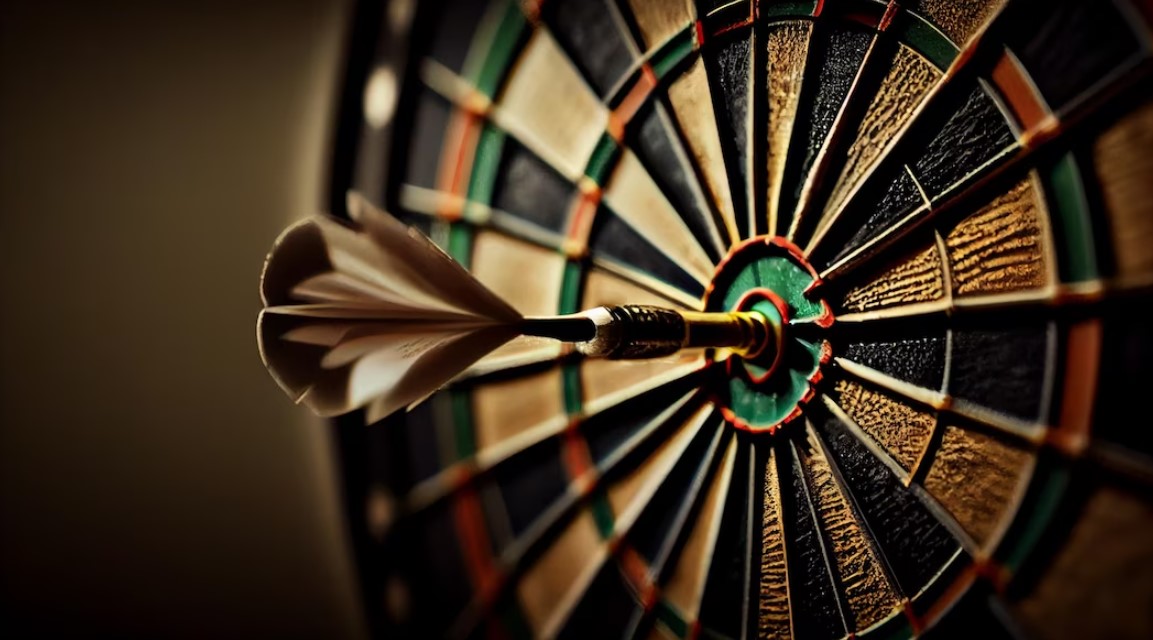Dart throwing is a beloved game and recreational activity enjoyed by millions around the world in bars, pubs, homes, and competitive tournaments. Though throwing a sharp projectile at a small circular target may seem simple on the surface, there are actually techniques, skills, and common beginner mistakes that determine one’s success and score. Whether you’re looking to improve your casual play to beat your friends or train for competitive dart events, understanding the proper throwing stance, grip, release, and follow-through are key. Additionally, factors like choosing the right darts and knowing game rules impact overall performance over the long run. This guide will overview everything you need to know as a beginner, from basic skills to common terms and equipment recommendations, so you can build consistency, aim well, and have more fun overall during your dart-throwing experiences.

Perfecting Your Stance and Grip
The foundation of a proper dart throw starts with having a solid yet comfortable stance in front of the dartboard. The exact positioning of your feet and distance away from the throwing line, known as the “oche”, will depend on your height and arm length when fully extended. However, general guidelines suggest standing about 8 feet back with your feet around shoulder-width apart for optimal balance and posture.
Many novice players tend to stand too close to the board or position their feet in an overly closed or angled fashion that hampers aim down the line. Be conscious of keeping your head still, torso squarely facing the board, and weight slightly forward on the balls of your feet.
In terms of hand positioning, it’s crucial to hold a dart correctly for maximum control during the throwing motion. Most importantly, use a loose but firm grip, avoiding a tight squeeze or fully relaxed fingers that lose control of the barrel. Place the dart gently between the crease of your thumb and index finger, allowing it to rest primarily across your fingertips at about chest height. This enables using your throwing arm’s elbow hinge for better leverage with a straight wrist, preventing unnatural twisting that alters aim at release.
Throwing with Consistency and Follow-Through
Releasing the dart with just the right amount of controlled speed and follow-through takes practice. A smooth, flowing arm motion is recommended rather than “punching” toward the board, using your shoulder, elbow, wrist, and fingers in sequence. Shift your throwing arm backward 6-12 inches, align your dart tip just below the intended target area, then follow all the way through 2-3 feet past the oche line for consistency. Flicking the wrist or stopping short tends to make throws stray low or wide more frequently.
Work on keeping the exact parameters of your stance and release grounded – altering minor aspects like elbow positioning or foot placement between shots is a very common source of inaccuracy issues when building skill. Strive to replicate the positive elements of your best throws rather than overanalyzing less successful ones. Recording your sessions can reveal useful patterns more clearly.
With dedicated training over daily or weekly practice sessions, your muscle memory and accuracy at various target areas on the boards will gradually improve using this checklist:
- Feet shoulder width apart
- Eyes on bullseye
- Elbow up
- Wrist straight
- Controlled speed on release
- Full follow through
Choosing Quality Dart Equipment
While no fancy equipment can inherently make up for poor form or lack of practice, having properly weighted darts with quality grips and points suited to your throwing style will make achieving tight shot groupings much easier. Generally for recreational players, a reasonably priced 18-22 gram tungsten alloy barrel with slim profile and front weighting helps stability for most grip types. Various patterns, small ridges, or grooved sections provide extra finger traction without heavily compromising airflow.
It’s wise to test sets with subtle shape and weight variations side-by-side to gauge what feels best visually aligned and leaving your hand. Investing in your own set also allows properly sizing the points and shafts lengthwise. Note that lighter, specialty brass or plastic dart options are also available but typically suggested for tournament-specific games and rules.
Understanding Dart Games
Beyond traditional “01” games with number countdown scoring popular in pubs and bars, aspiring dart enthusiasts should familiarise themselves with prominent tournament formats as well. Knowing the specialised rules and tactics before attempting to compete can make gameplay far less intimidating.
The staple Steel-tip matches include:
- Cricket – A tactical “race to close numbers” game with combined points scoring
- 501 – The classic eliminate-your-score countdown
- Golf – Aiming for the lowest possible points each round
Meanwhile popular Soft-tip electronic bristle boards add greater variety and arcade fun:
- Shanghai – Hitting Triple, Double, Single segments in order
- Baseball – “Rounding bases” to reach a zero score
- Basket – Target outer single/double rings or inner Triple ring
Understanding the goals, scoring sequences, and terminology used for calls in each style will help both recreational players and aspiring competitors appreciate the nuances and enjoy dart games more fully.
In the end, mastering proper throwing technique along with smart training, equipment choices, and game knowledge provides a solid foundation for successfully hitting your targets with darts over the long term. Though cultivating accuracy and precision takes continued practice, breaking the process down into stance, grip, release fundamentals, equipment upgrades, and rules familiarity makes the journey more achievable and enjoyable. With the right mindset and tools, beginners can progress steadily from routinely hitting triples to nailing bullseyes, 180s, and beyond.
